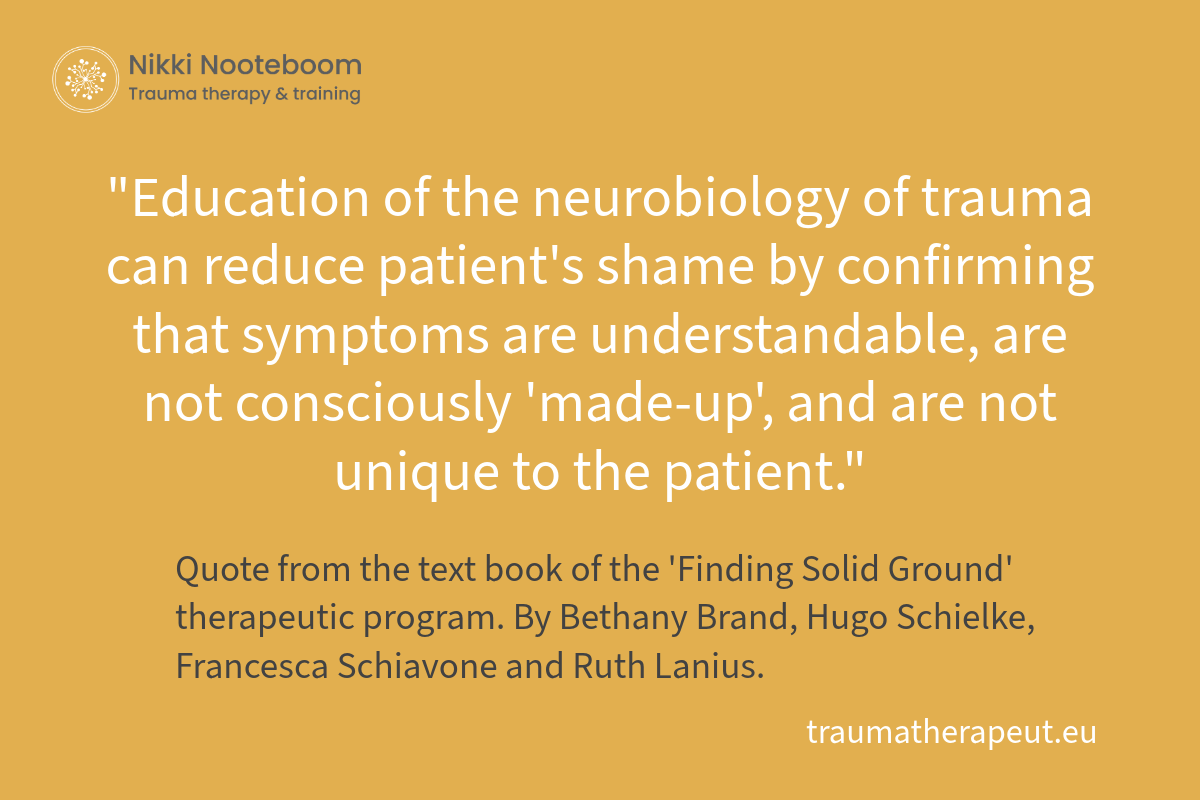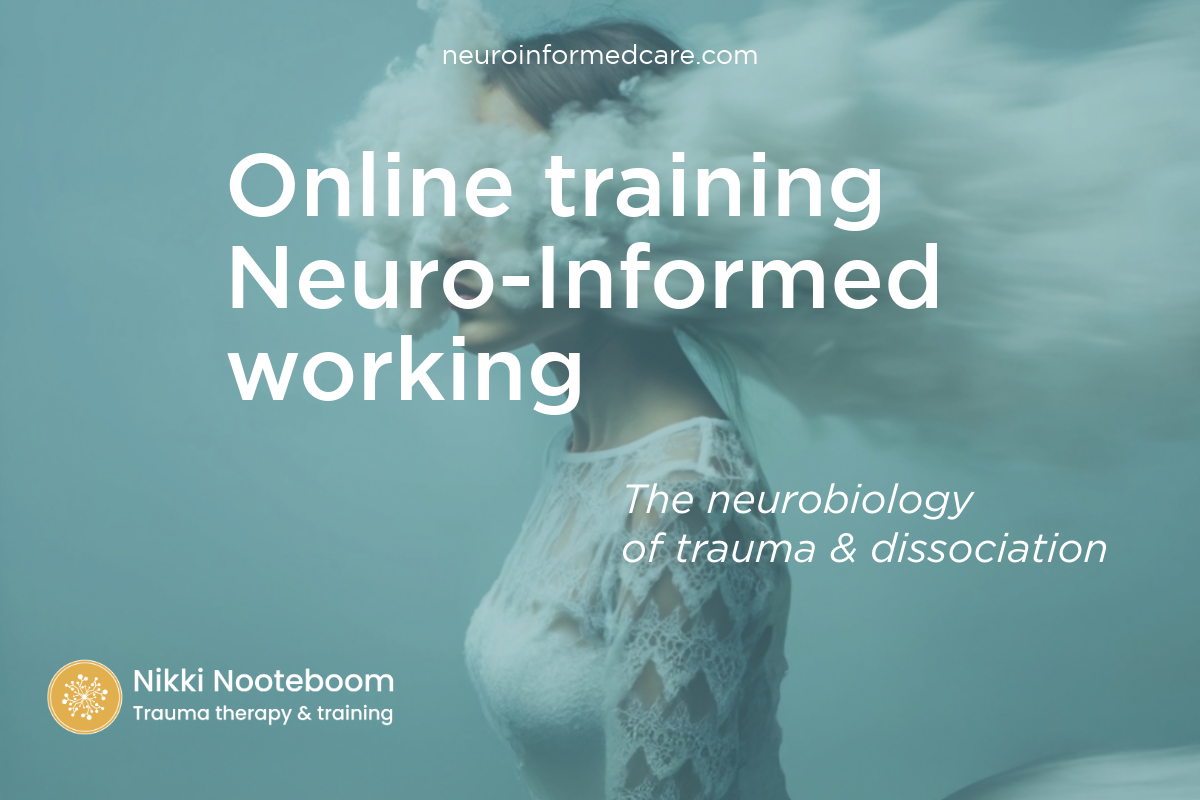Trainings in the latest knowledge on trauma, dissociation, and clinical applications. Based on neurobiology.
Trainings in the latest knowledge on trauma, dissociation, and clinical applications. Based on neurobiology.
Listen to the podcast episode with Nikki on John Clarke’s show in the US (in English).
A major shift in healthcare came when researchers became able to look inside the body. In physical healthcare—still treated as something separate from the functioning of the nervous system (brain, spinal cord, and nerves)—it has become unthinkable not to use imaging for a broken leg or constricted lungs. After all, it shows reality.
In “mental” healthcare, this is still hardly used. The field is still largely based on behavioral research and historical conclusions that are not exclusively grounded in science and reality. For example, the idea that thinking, feeling, and the body function separately, and that the prefrontal cortex is in charge of everything. Since we have been able to look into the brain—the control room of everything that happens in and with our system—we can see what we already somehow knew and felt: everything works together, everything influences each other, and the cortex is not the boss.
Now that trauma can be visualized and defined as such, we can see that—and how—it impacts thinking, feeling, and behavior. This also makes clear why purely cognitively oriented support can hardly lead to lasting healing, recovery, or integration. At the same time, it shows that focusing only on regulation and “the body” cannot achieve this either, because neurobiology simply is not organized that way. The logical functioning of the brain on a micro level is, in fact, structurally overlooked in how therapy is applied.
Fortunately, thanks to researchers who make visible how the brain responds and directs during behavior or in certain stuck states, we can now see what is actually happening. This allows us to understand what the brain needs in order to reorganize itself more safely, and in which sequence. That turns out to be strikingly different—and calmer—than the way we have been used to approaching it until now.
NEW!
Training on Neuro-Informed working: the neurobiology of trauma
Neuro-Informed Practice: What Changes When You Integrate the Logic of Neurobiology?
Trauma changes us in a structural way. Not only in our behavior and in how we experience ourselves and the outside world, but on a deep neurological level. Now that trauma can be made visible—and we can understand why and how it causes adaptations deep in our neurobiology—we can also offer more targeted and effective support.
You don’t need to be a neurobiologist to understand why there is logic in the sequence of steps that promote system-wide healing, and in the ways we can support clients in that process. Your knowledge of neurobiology and how to guide clients through it is of great importance.
The result? More logic, more clarity in what you do, less searching, and fewer stuck, repetitive patterns.
Interested? I provide online trainings in English or Dutch for groups from 1o people. Please reach out if you are interested: info@traumatherapeut.eu







